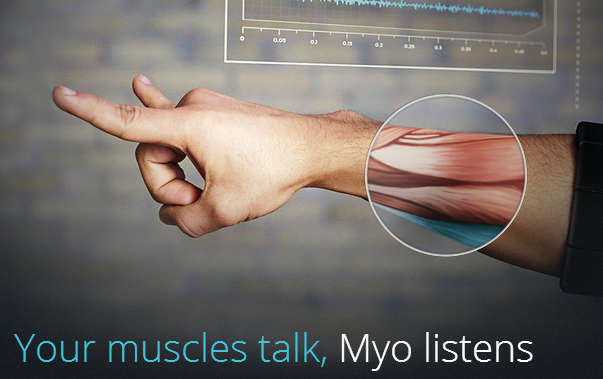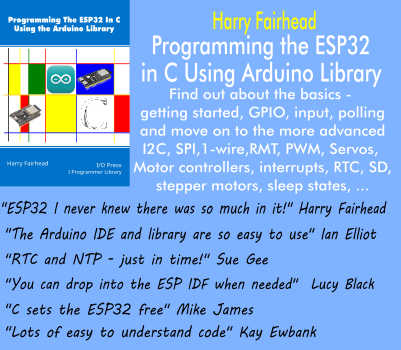| Muscle Input Device Getting Ready To Ship |
| Written by Harry Fairhead | |||
| Sunday, 01 December 2013 | |||
|
It seems this is the era of novel input devices. Not content with the Kinect and similar gestural input devices, Myo taps directly into the electrical signals your muscles generate. We first heard about the Myo input device back in February this year and it seems that the company is about ready to start shipping Alpha units and it is accepting orders for developer kits, which it hopes to ship early in the new year. The Myo input device, being built by Canadian firm Thalmic Labs, measures the myoelectric activity in the arm. You might think that this would limit the input to crude movements such as clenching a fist but the demo video suggests that it is refined enough to distinguish between the activities of smaller muscle groups. For example, different muscle activities are associated with rotating the arm and flexing the fingers.
The device itself seems to have matured since out first look. it now has eight muscle sensors, a 3-axis accelerometer, 3-axis gyro and a 3-axis magnetometer. It also supports haptic feedback, and Bluetooth using an ARM Corex M4 CPU. The arm band can be charged by micro USB and it has APIs for iOS and Android. Even without measuring muscle signals, it could certainly let you work out the orientation of the arm.
Details of the SDK are limited, but it seems that you get access to a set of predefined gestures, i.e you don't get to define your own. What you can do is interpret what the gestures mean as part of your app. If you want to apply for early access to the SDK all you have to do is outline what you might build using it. If you have pre-ordered a Myo then you get priority. A new developer kit, complete with hardware has also just been announced at $149. It is difficult to know which new types of input device are truly going to make a difference. For example, the Leap Motion hand gesture device was launched in a similar incremental way with lots of emphasis on getting programmers to create new apps, but when it finally appeared the response wasn't quite a great as might have been anticipated. It is selling well and there are some interesting apps, but nothing that hints that it could replace the mouse or the touch screen. It's OK but not a revolution. The Myo is in a slightly different class in that its most obvious applications are in games and controlling devices such as drones or robots. Perhaps there is a killer app waiting to be discovered, but my guess is that "gorilla" arm (aka arm ache) is going to be the biggest problem in a wider adoption.
More InformationRelated ArticlesMyoelectric Input - Better Than Kinect? Intel's Vision For 2013 - Perceptual Computing PrimeSense Give Details Of Tiny Depth Sensor PrimeSense Imagines A 3D Sensor World
To be informed about new articles on I Programmer, install the I Programmer Toolbar, subscribe to the RSS feed, follow us on, Twitter, Facebook, Google+ or Linkedin, or sign up for our weekly newsletter.
Comments
or email your comment to: comments@i-programmer.info
|
|||
| Last Updated ( Sunday, 02 June 2024 ) |


